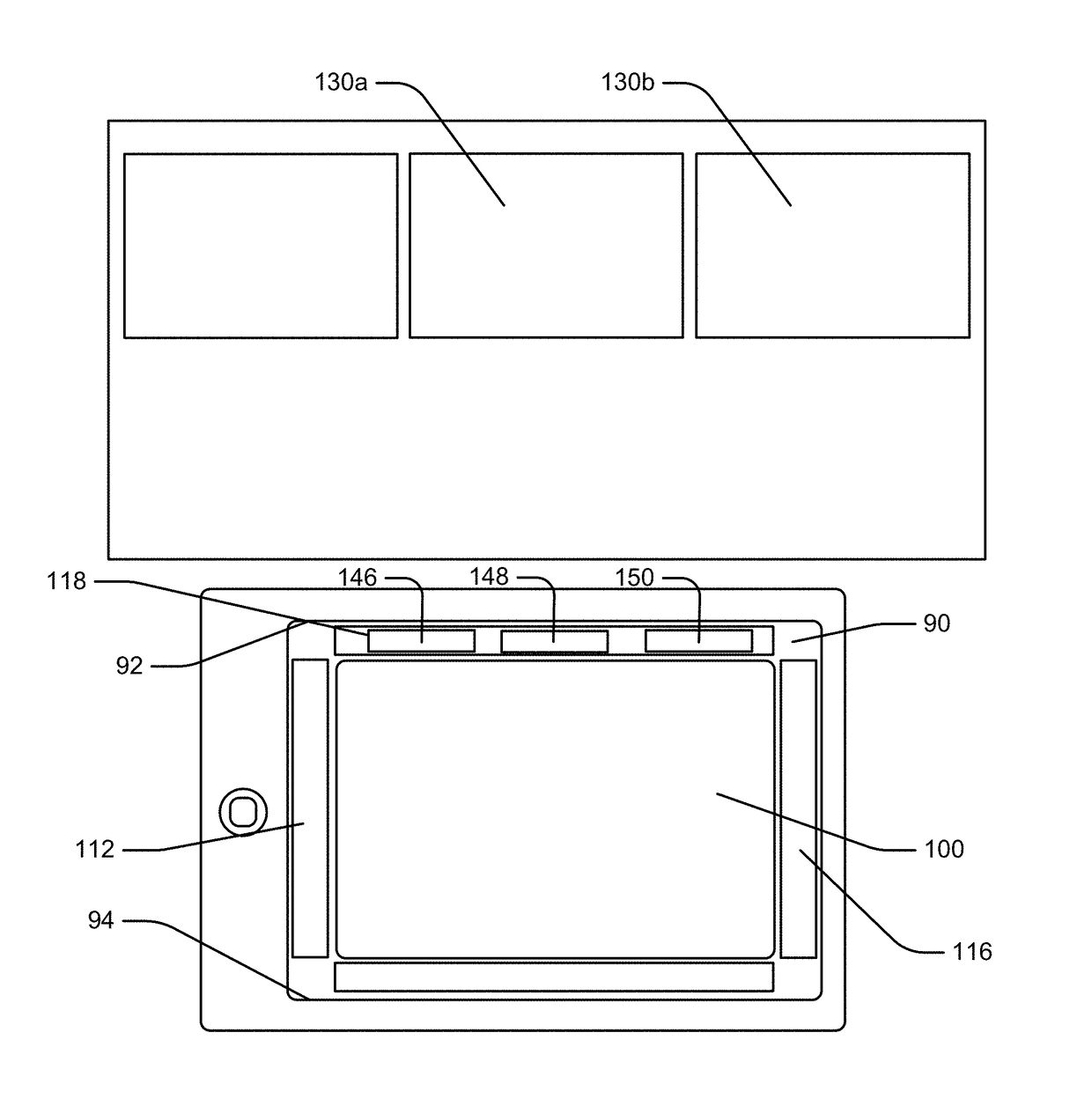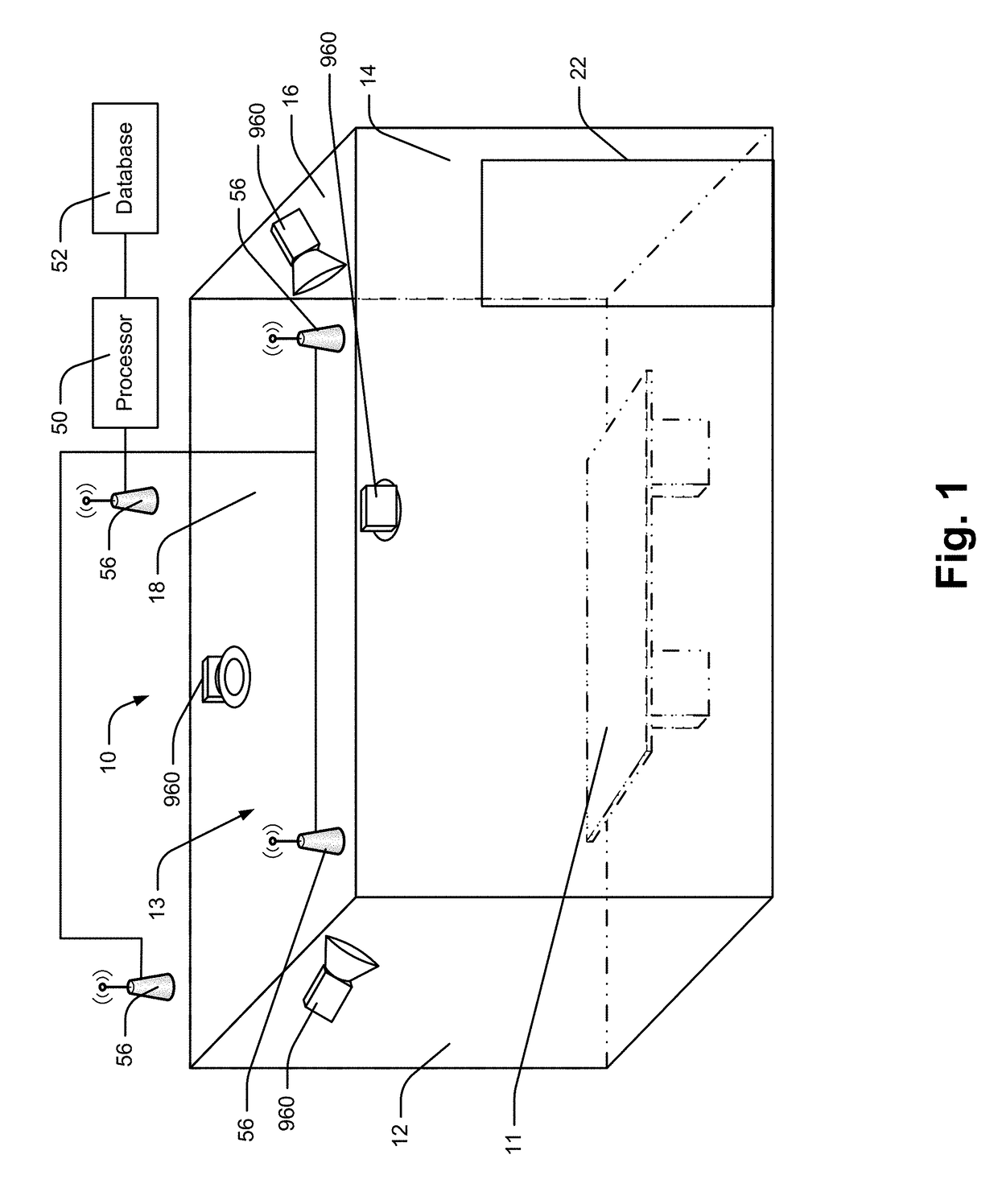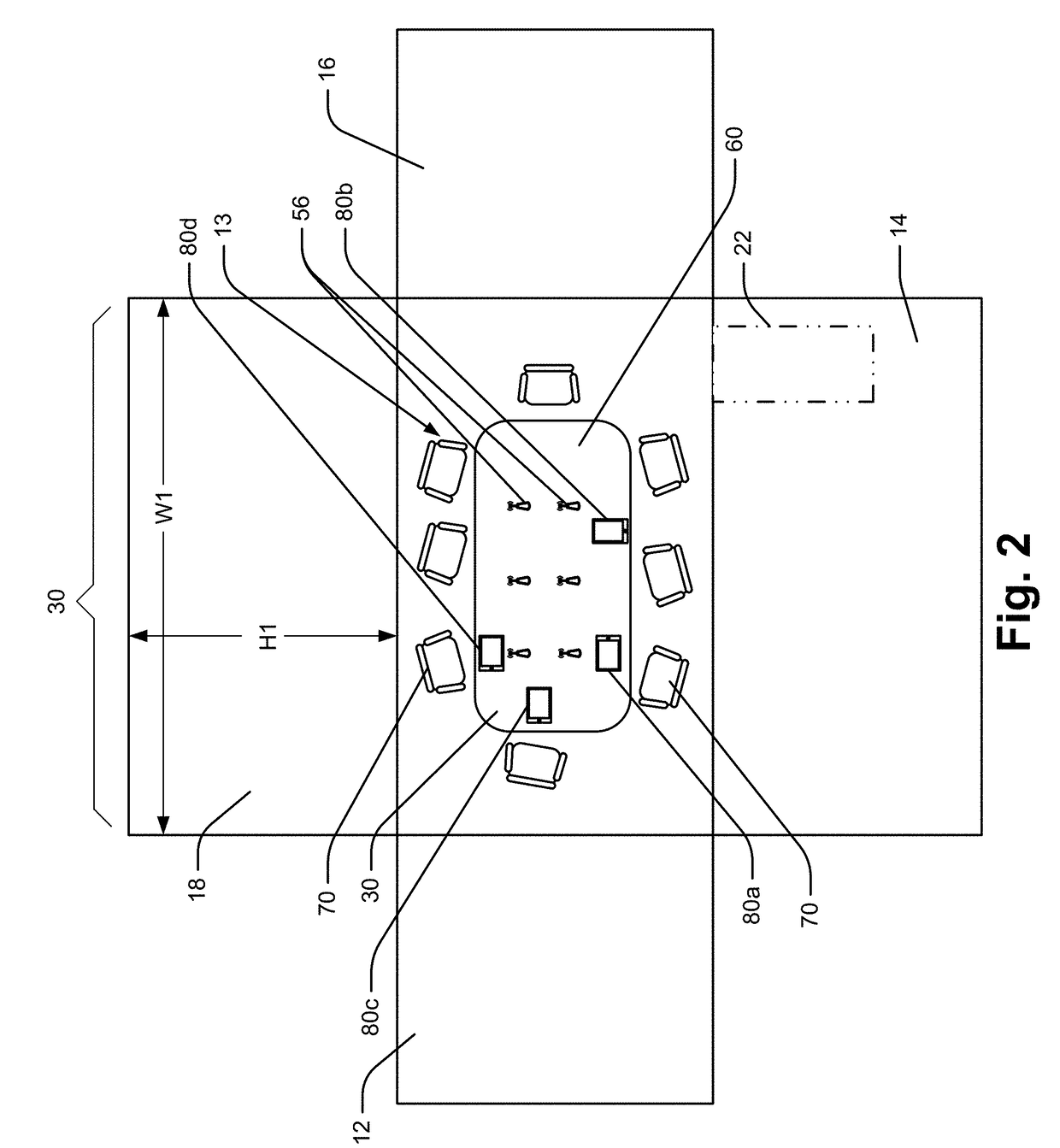Emissive surfaces and workspaces method and apparatus
a technology of emissive surfaces and workspaces, applied in the field of large electronic information presentation surfaces, can solve the problems of limited ability to simultaneously share content from multiple sources, no way for the single user to accomplish this task, and scape does not enable direct resizing of content on common display screens, so as to improve the overall system
- Summary
- Abstract
- Description
- Claims
- Application Information
AI Technical Summary
Benefits of technology
Problems solved by technology
Method used
Image
Examples
Embodiment Construction
[0103]Referring now to the drawings wherein like reference numerals correspond to similar elements throughout the several views and, more specifically, referring to FIG. 1, the present invention will be described in the context of an exemplary conference space configuration 10 that includes a conference table 11, four wall subassemblies (referred to also hereafter as walls) 12, 14, 16, 18, a processor 50, a database 52 and a plurality of wireless access points 56. The walls 12, 14, 16 and 18 form a rectangular space and include first and second end walls 12 and 16 and first and second side walls 14 and 18. A door or egress 22 for entering and exiting the space 10 is located in wall 14 adjacent wall 16. In the interest of simplifying this explanation, the walls 12, 14, 16 and 18 will be referred to as east, south, west and north walls, respectively. In FIG. 2 and other figures thereafter having a similar appearance, the walls 12, 14, 16 and 18 and table 11 are shown in a top plan vie...
PUM
 Login to View More
Login to View More Abstract
Description
Claims
Application Information
 Login to View More
Login to View More - R&D
- Intellectual Property
- Life Sciences
- Materials
- Tech Scout
- Unparalleled Data Quality
- Higher Quality Content
- 60% Fewer Hallucinations
Browse by: Latest US Patents, China's latest patents, Technical Efficacy Thesaurus, Application Domain, Technology Topic, Popular Technical Reports.
© 2025 PatSnap. All rights reserved.Legal|Privacy policy|Modern Slavery Act Transparency Statement|Sitemap|About US| Contact US: help@patsnap.com



